By Dr. Noviar Andayani, M.Sc.
Country Director of WCS Indonesia Program

Off we go!
I always wanted to visit Karimunjawa National Park (KNP) since day one I joined the WCS Indonesia Program back in 2003. My reason was some kind of personal – I visited the park many years ago right after I came home from my study in Sweden. Other than a rough sea journey that lasted for more than 6 hours, I still had a vivid picture in my mind of the park’s crystal blue and clear water. Never crossed my mind that one day I would be part of a talented team who dedicated their lives to protect this beautiful marine park. Still, it took me 20 years before I revisited KNP and witnessed the great works our team has been doing over those years.
We arrived at Karimunjawa at around 11 am after a smooth 2 hours ferry drive on the Bahari Express. The ferry was packed with visitors who took advantage of the long holiday weekend from the Eid Adha Festival that fell on Thursday of the 29th of June this year. It was very different from my first trip, but the excitement was the same if not more this time.
Part of the excitement came from how well known our colleague, Jamal, among the locals. They greeted him warmly as we made our way out of the seaport. I felt like celebrity walking beside him. He has been with WCS for many years, starting as an enumerator who helped us collecting data on fishing activities from the waters around the national park. Now, Jamal is our lead who works with the Park to support communities in tourism and empowerment programs that do not only bring economic benefit, but also protect the reef ecosystem and marine diversity of KNP.
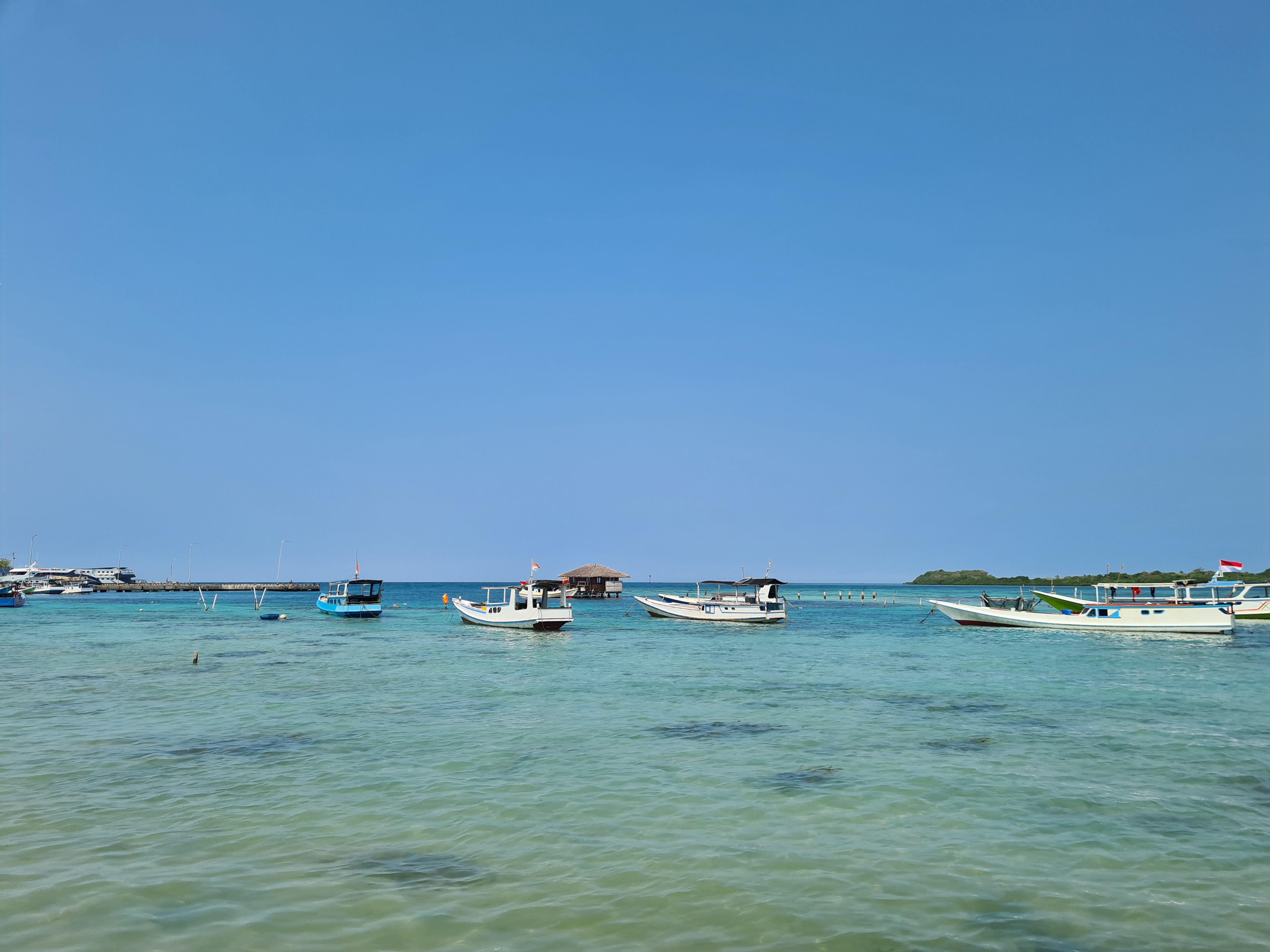

Our day one in Karimunjawa was closed by a dinner under the island’s night sky. It was a lovely evening with a full moon and bright stars, a magical transformation from a perfect sun down we witnessed a few hours earlier in Tanjung Gelam at the west point of the island. Day one was also about the story of Ibu Dian and Pak Udin, two KNP’s staff, who monitored the impacts of tourism onthe park’s ecosystem. The tourism industry has been significantly increasing up to 300% (before Covid-19 pandemic) within the past 10ish years with the number of daily visitors during weekend were around 500-800 people and could reach to 1,000 people during holiday seasons such as this.
Our team has been working with KNP and tourism association to develop a sustainable business model that could deliver social, economical, and ecological benefits to the people of Karimunjawa. Pak Udin’s story about fishers who carefully brought turtles’ eggs to his semi-natural hatchery in Menjangan Kecil Island is a heartening evidence of this concept. Two species of turtles, green sea turtle (Chelonia mydas) and hawksbill sea turtle (Eretmochelys imbricata), lay their eggs along the beaches of many islands within KNP. In the past, people poached their eggs and put the turtles’population in decline. Today, they collect the eggs they find and bring them into Pak Udin’s hatchery to be cared for until those eggs successfully hatch into turtles hatchlings and ready to be released to the sea. Visitors can take part of the release program for ten thousand rupiah for one turtle hatchlings. The money is shared for conservation program and community.
Small and nimble: meet our Team!
Protected areas have been our key approach to conserve Indonesia’s incredible biodiversity. As a strong supporter for the theory of island biogeography, I believe the larger space we give to biodiversity is the better, and island is the best ecological model to demonstrate this paradigm. But, this theory was not one of the reasons we decided to build a marine conservation program in KNP. The park is just over one hundred thousand hectares and was badly troubled by muroami fishing when we started working there twenty years ago.
Muroami fishing, also known as reef hunting, is one of the most destructive form of illegal fishing that has long lasting destructive impacts to the reef ecosystem. Also, the non-discriminate practises meant that fishes of all sizes, ages, and species were caught unsustainably. We worked with the KNP and community leaders to address this problem, spending many hours, days, months, and years building the trust and partnership to find alternatives to muroami. At the core of our works is sound science, and at the heart of our engagement is our talented team!
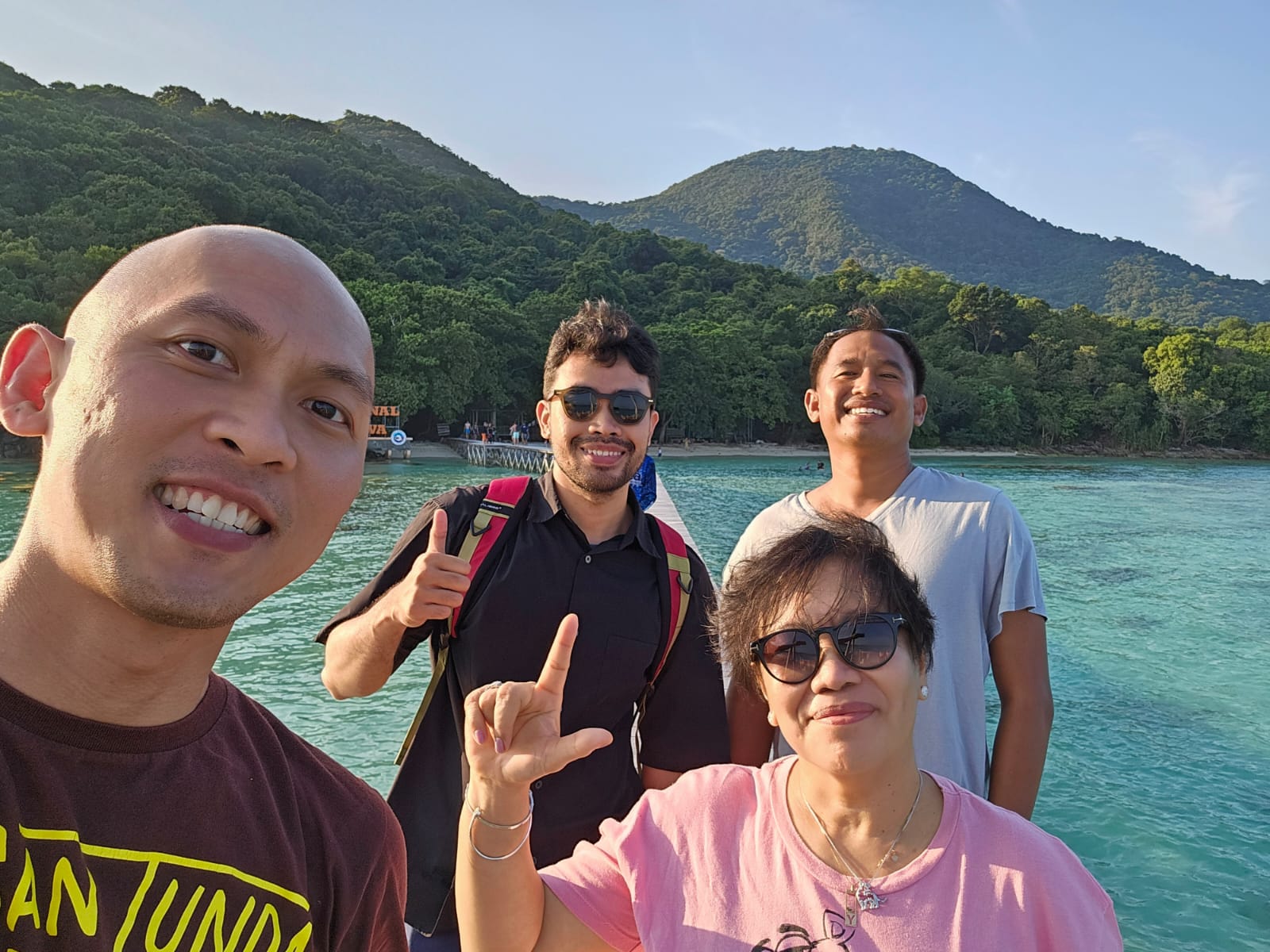
After twenty years of working tirelessly, muroami is now gone from KNP and the fishers transformed their fishing fleets into tourist boats. Hundreds of visitors come to the park to enjoy it’s soft white sands and crystal blue water. They also come to admire the lively and colourful coral reef around many of the islands that make KNP so special. Jamal is now leading the Kj’s tour guide association as part of our strategies to make sure the growing tourism industry does not harm the park’s biodiversity and ecosystem.
Our twenty years of collaboration and partnership with the KNP and the islands’ communities also has transformed the way the fishers catch the fishes. Not only now they abandoned muroami, but they also apply sustainability principles through the park’s zoning system and selective harvest practises. For these encouraging impacts, we have to thank Ripanto, our sustainable fisheries lead in KNP. In one of my chats with him, Ripanto told me that he planted various fruit trees in his garden, so that he could use his experiences with those trees to engage with the communities. I was amazed by his ingenuity and also grateful to his dedication to our mission. More than that, I also realized how fortunate I was to be part of his and Jamal’s stories for KNP, and stories of many other dedicated colleagues from Sabang to Morotai. As Jamal repeatedly said when we walked along the shore of KNP – “WCS dong!”
At last!
Surely KNP is not only about Ripanto and Jamal. Most, if not all, our colleagues in the Marine Program have left their marks on this beautiful marine national park. During my early days when I just joined WCS, I often bumped into them, either on their way to KNP or just came back from one of the surveys. I had been wondering since those days why they were so committed to this not so large and not so popular park. At that time Bunaken was on top of the list for tourist destination, Raja Ampat was the mysterious paradise, and Sawu was a daring idea of creating 3.3 million hectares of marine protected area in Indonesia. All were within the coral triangle that harbours the richest coral reef system in the World. KNP was none of those! Yet, here we are for twenty years and counting, working and learning from this park and the people living there.
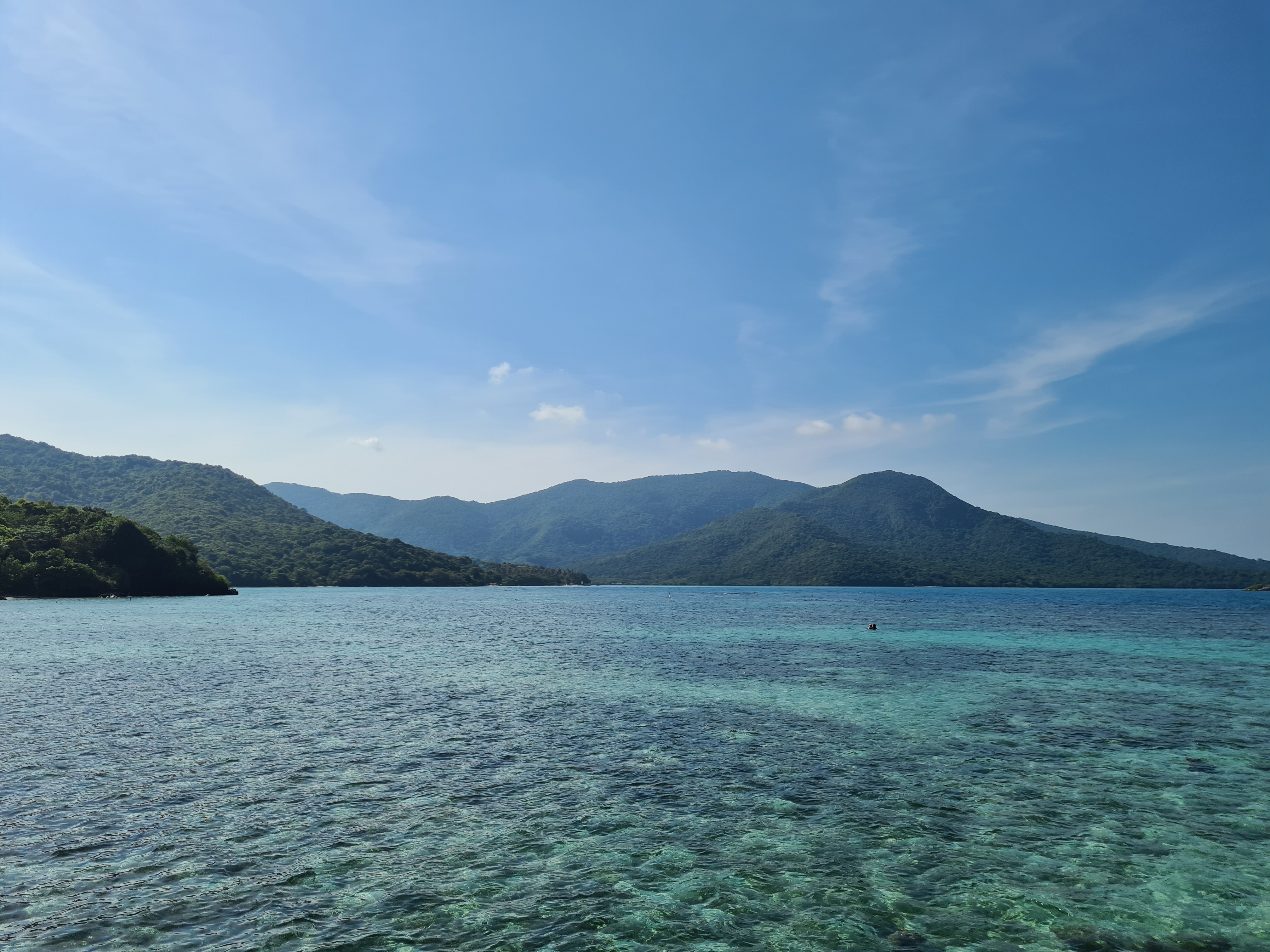
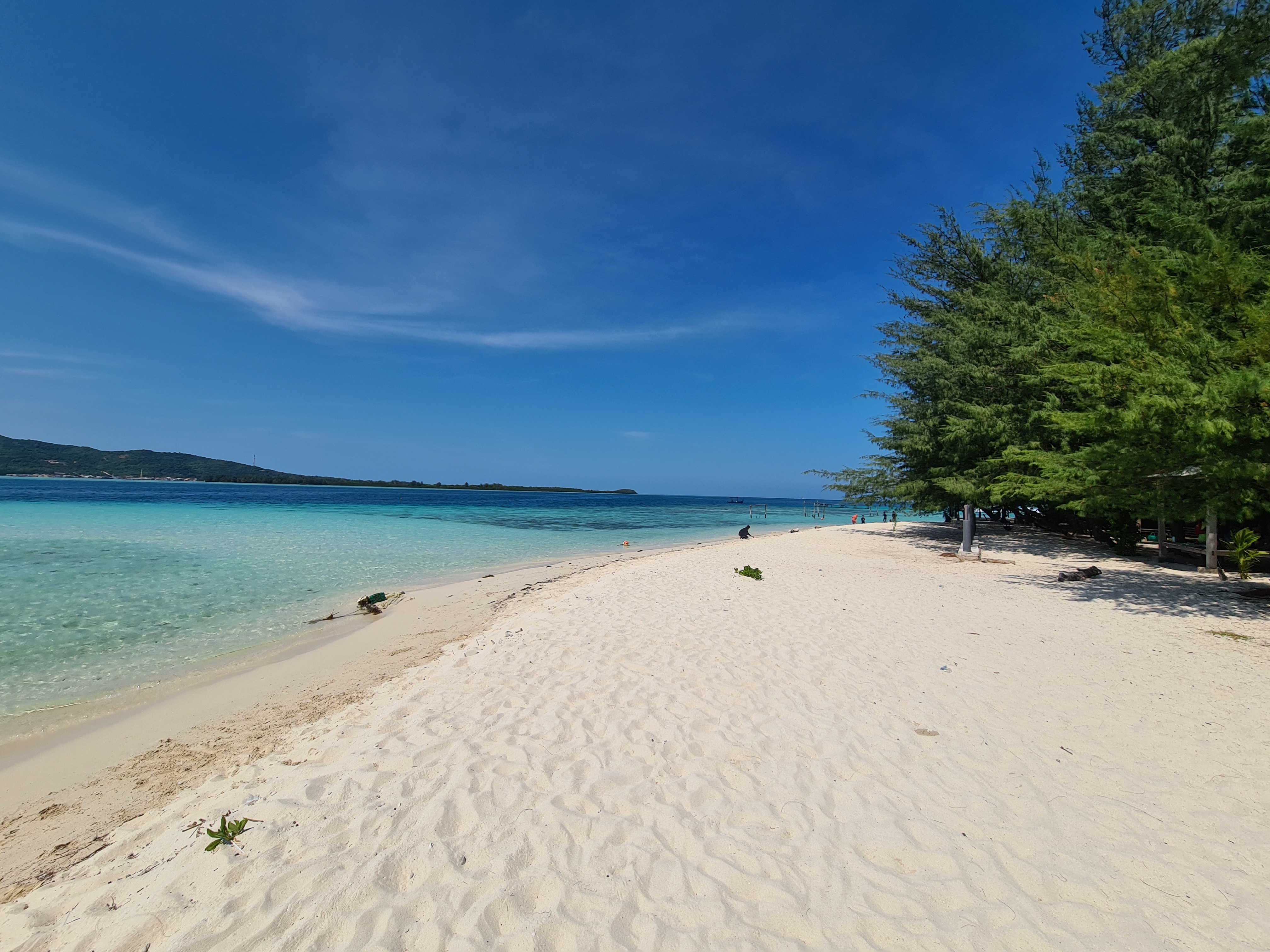
I have known long before I finally came to KNP that we have been doing well to support the park conserving one of the most intact coral reef ecosystem in the Java Sea. Still, I could not help feeling very proud when I heard from Pak Saleh, oneof the well-respected community leaders in Karimunjawa, about the great things we have done. His remarks were then echoed by our KNP’s friends who joined us in a dinner on the last day of my visit. Through our friendly conversation on that evening I could somehow picture how we started everything twenty years ago.
I could picture how Irfan, Tasrif, Yudi, Rizya, Rian, Sinta, Epong, Atik, and Ratih built our vision for KNP. I am truly grateful for the solid foundation they have laid for us to continue our works there. Although we now only have a small team in KNP, with Sukma, Ripanto, and Jamal, but they are the marvel of our force. Through their passion and commitment, I could see and experience what it means to be part of WCS’ mission in this part of our great country.
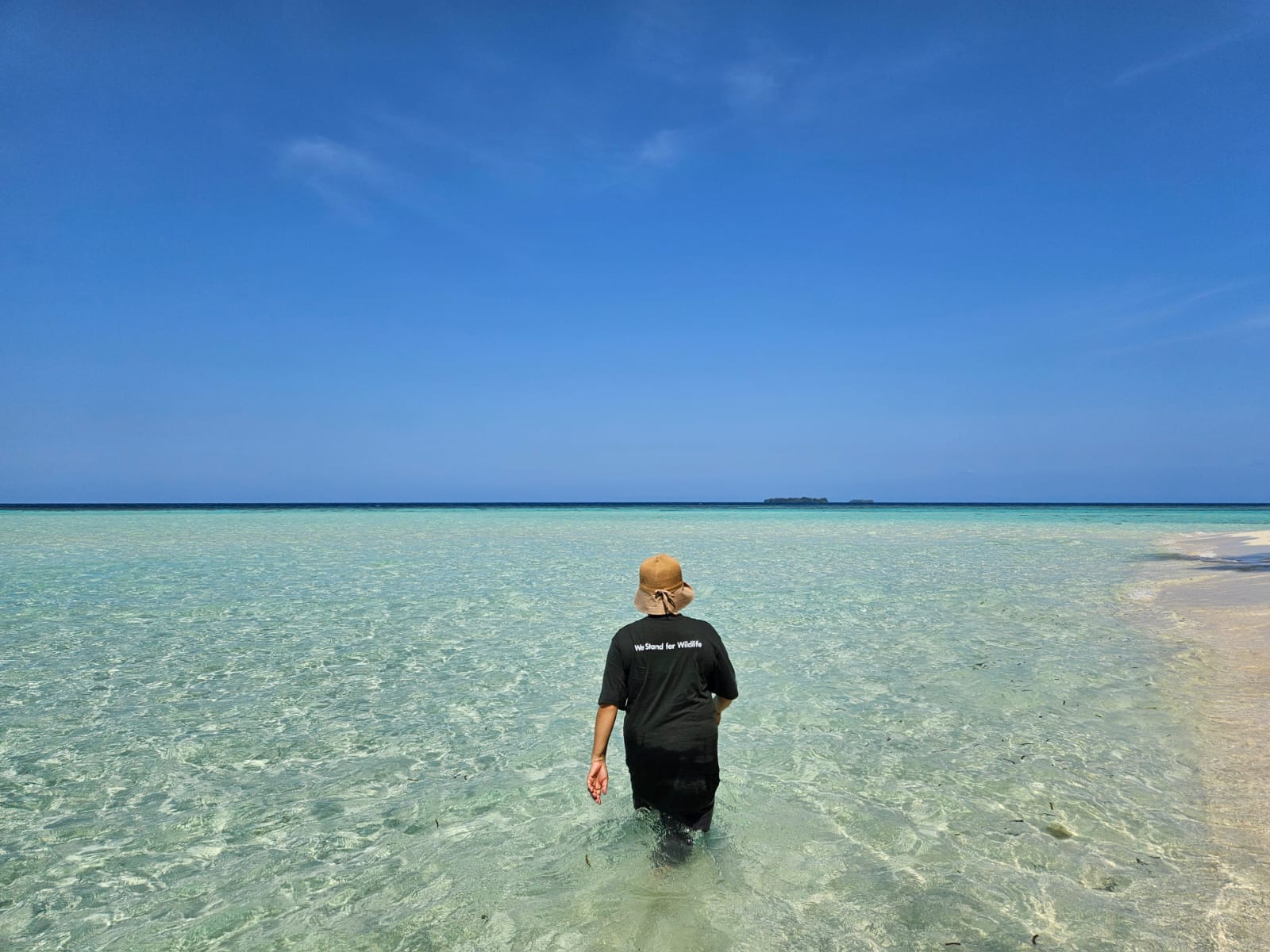

“We Stand For Wildlife”